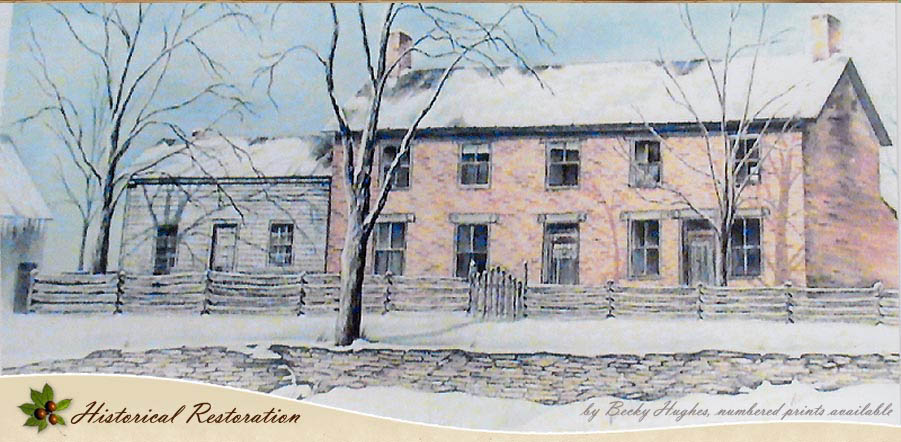![]()
In the early summer of 2006, Ralph Alexander came to the John T. Wilson homestead to possibly purchase a railroad caboose. He had seen an auction advertised in the newspaper that was going to be held at the Wilson place. He had been looking for a caboose that he could move to his Batavia, Ohio farm as a restoration project in his retirement. Ralph decided to check out the caboose on the Thursday ahead of the Saturday auction. When he first arrived, he did not even notice the Wilson home, so overgrown it was from trees, brush, and vines.
As he walked around the property to see the caboose and some of the items being prepared for the auction, he realized there was in fact a house. He started to hear stories about the history of the home from some of the auction workers. He learned that the home and property was also for sale separately and had a few prospective buyers attracted to developing the property, but not interested in saving the severely dilapidated home and buildings.
From on top of the hill, where the home sits, Ralph could see the quaint hamlet of Tranquility and the picturesque farm land around it. Even in its sad state of condition, he immediately fell in love with the site and had the vision of the John T. Wilson homestead restored to its former grandeur.
Ralph came back the next day on Friday to see the house again and brought a carpentry instructor and friend, Chad Graybll along to help him assess the house. His friend advised against the purchase, saying that the house was too far gone. As Ralph surveyed the property closer, a wave went over him – it was as if John T. Wilson who is buried across the street in the Tranquility Cemetery intoned the message, “Save this place.” Ralph went up to the auctioneer who was also the realtor and made an offer that same day.
That afternoon as he drove home, he thought I better call Patricia (Ralph’s wife) and tell her what I have done. When he called, she asked if had bought the caboose, and he said, “No.” She then asked if he bought anything, knowing that he had a habit of buying old tractors and machinery to fix up. Ralph answered, “Yes…I bought the farm!” It took a while, but Patricia eventually warmed to the idea.
They sought out the required financing and within a few short weeks were the new owners of the Wilson property. And so began the latest chapter in the legacy of the John T. Wilson homestead – a journey of over five years of unbelievable labor, endeavor, and expense to save and restore the property to its former glory and make it available to the public to appreciate and enjoy.
Plans are still on track to offer a bed and breakfast at the Wilson Homestead beginning in early summer of 2012. Every effort has been made to restore the home as it was in the mid 1800s with a few minor contemporary changes to make guests comfortable while maintaining the period ambience. An energy efficient and state-of-art geo thermal system heating and cooling system has been unobtrusively installed. Modern bathrooms have been added and all rooms are being electrically updated to code with new wiring, fixtures, and controls.
Some of extra touches that were used to restore the home have included, replacing wood flooring where needed with salvaged boards from a period home that was being demolished. Timbers from a log home that was falling apart in Kentucky were saved to replace logs in the attached log structure of the Wilson home. Special mortar was chemically and color matched to the original mortar used in the bricks of the main home to repair joints. Handmade wood shakes were purchased from Maine by one of the few masters left producing them to cover the roof as it was in 1840. The stones used to rebuild the large fireplace in the log cabin were salvaged from the foundation of an old school that was being tore down.
Please plan to stay with us and experience the life of the 1800s. We expect to begin taking reservations in early 2012.
The Alexander Family
(A photo history of the restoration is being developed. Check back soon.)


